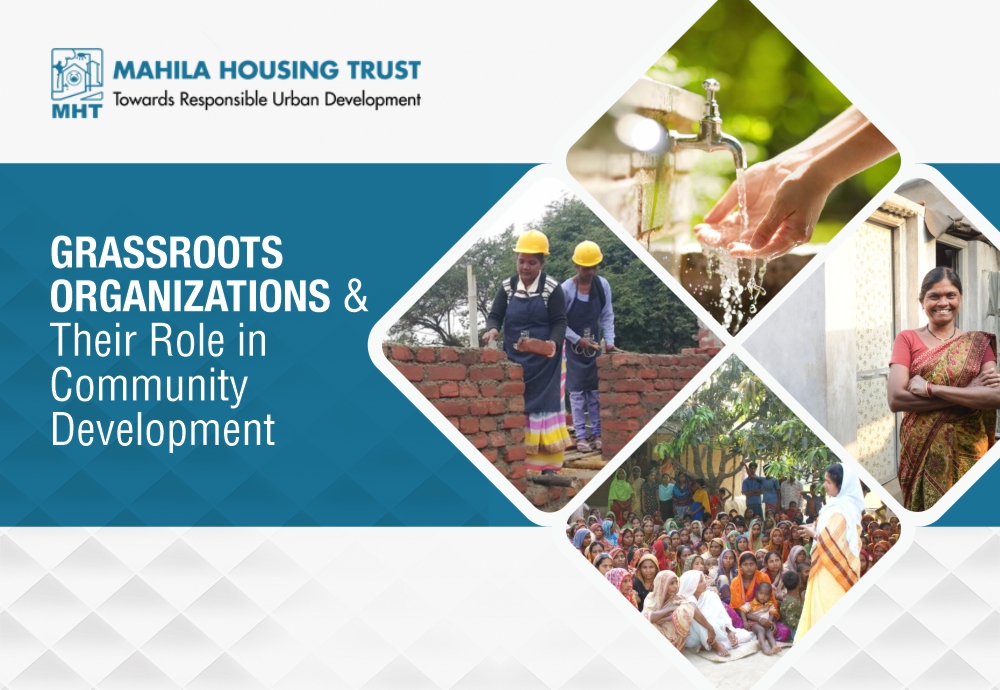
Grassroots Organizations and Their Role in Community Development
Grassroots organizations are the bedrock of community development, fostering inclusive, sustainable, and gender-responsive cities. These organizations operate at the local level, driven by the collective efforts of community members who aim to address specific needs and advocate for positive change.
We will discuss the importance of grassroots organizations in community grassroot development in this blog post, emphasizing their role in empowering communities, advancing gender-inclusive cities, and helping to realize the Sustainable Development Goals (SDGs).
Understanding Grassroots Organizations:
Grassroots organizations are characterized by their bottom-up approach, community-led decision-making processes, and direct engagement with local residents.
They develop naturally from inside communities, motivated by common worries and goals. These groups operate frequently on a volunteer basis and range in size from modest neighborhood associations to bigger networks.
The Role of Grassroots Organizations in Community Development:
-
Empowerment and Mobilization of Local Communities:
Grassroots organizations empower communities by providing them with a voice, mobilizing collective action, and encouraging active participation in decision-making processes. They create grassroot development platforms for dialogue, allowing community members to identify their needs and priorities, and work together to find solutions.
-
Identifying and Addressing Community Needs:
Grassroots organizations have a deep awareness of regional problems and can quickly spot unmet needs in the community. They obtain important information that guides their grassroots development projects through conducting surveys, holding community gatherings, and interacting with locals.
-
Promoting Inclusivity and Gender-Responsive Cities:
The promotion of gender-inclusive cities is greatly helped by grassroots organizations. All community members, especially women, children, and marginalized groups, have their voices and concerns taken into consideration. They aid in building communities that are safer and more equitable by supporting gender-responsive policies and activities.
According to UN Women, gender-inclusive cities are those that prioritize women’s safety, access to public spaces, and involvement in decision-making processes. Grassroots organizations actively work towards achieving these goals, leading to more inclusive urban environments.
-
Contributing to Sustainable Development Goals:
The SDGs, which offer a worldwide framework for sustainable development, were significantly influenced by grassroots organizations. Grassroots organizations make considerable progress towards attaining the SDGs by concentrating on certain SDGs that are pertinent to their communities, such as the eradication of poverty, high-quality education, water sanitation and hygiene, and sustainable cities and communities.
Challenges and Limitations Faced by Grassroots Organizations:
While grassroots organizations have immense potential, they also face challenges that can hinder their effectiveness:
-
Lack of Resources and Funding:
Grassroots organizations frequently have financial constraints that make it difficult for them to carry out and continue their efforts. Fundraising is an ongoing worry for them because of their reliance on donations and volunteers.
-
Limited Capacity and Volunteer Burnout:
Community development depends on the enthusiasm and commitment of grassroots volunteers. Volunteers may become burned out and exhausted due to the demands of managing and operating initiatives, though. These difficulties are made even worse by a lack of training and capacity-building opportunities.
-
Institutional Barriers and Resistance to Change:
In order to effect genuine change, grassroots organizations may run across opposition from existing institutions or bureaucratic roadblocks. Overcoming these obstacles requires forming alliances and promoting policy changes.
Overcoming Challenges and Enhancing Effectiveness:
To address these challenges, grassroots organizations can adopt various strategies:
-
Collaboration with Other Stakeholders and Organizations:
By partnering with local businesses, government agencies, and non-profit organizations, grassroots organizations can leverage collective resources and expertise to achieve greater impact.
-
Fundraising and Resource Mobilization Strategies:
Grassroots organizations can diversify their funding sources by exploring grant opportunities, crowdfunding campaigns, and engaging in community fundraising events. Effective financial management and transparency are also essential for building trust with donors.
-
Building Partnerships with Government and Private Sector Entities:
Establishing relationships with policymakers and private sector entities can lead to greater support and resources for grassroots initiatives. Engaging in dialogues and advocating for policy changes at the local level can help overcome institutional barriers.
-
Training and Capacity Building Programs for Volunteers and Leaders:
Investing in training programs, leadership development, and mentorship opportunities for grassroots volunteers and leaders can enhance their skills and capacity to manage projects effectively.
Conclusion:
Grassroots organizations are the backbone of community and grassroot development, playing a vital role in empowering communities, promoting gender inclusivity, and contributing to the achievement of Sustainable Development Goals. Despite the challenges they encounter, grassroots organizations persist in driving positive change at the local level. By recognizing their invaluable role and offering support, Mahila Housing Trust, as an NGO, is dedicated to collaboratively building stronger, more resilient, and sustainable communities for everyone.
